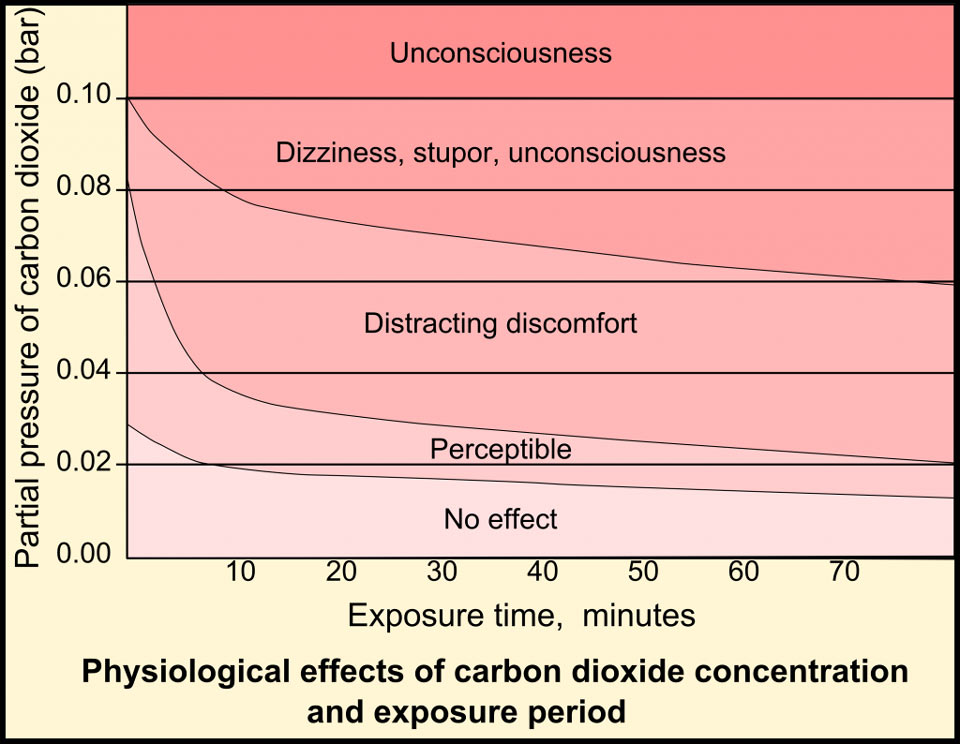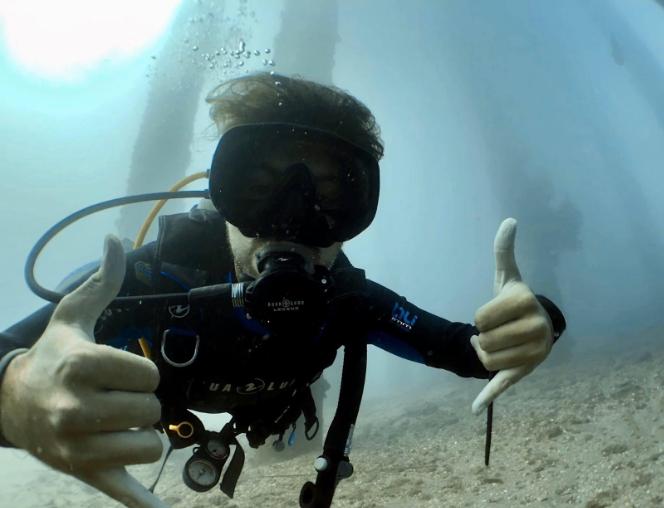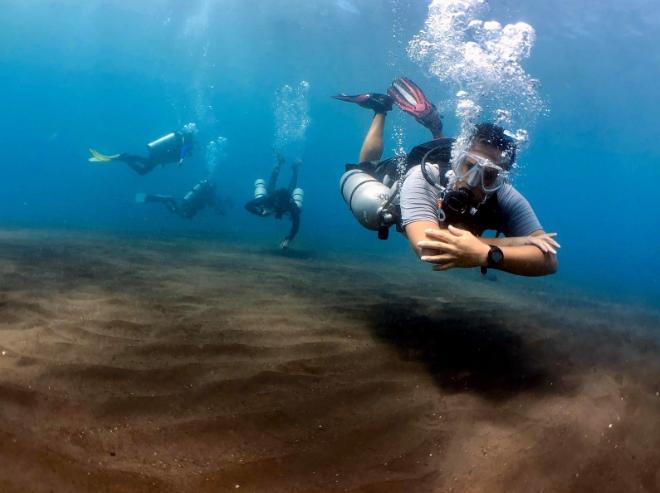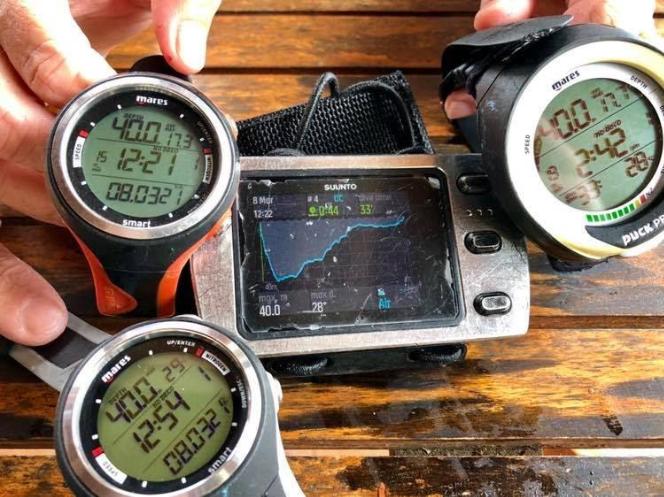PADI IDC Study Notes – Carbon Monoxide Poisoning, Oxygen Toxicity and Nitrogen Narcosis

Carbon Monoxide, in addition to being a concern around running combustion engines, is a serious factor in scuba diving. Improper lubricants, compressor maintenance or air contamination can all cause an increase in CO levels in the air you breathe from your SCUBA unit. Smoking also emits carbon monoxide; it takes 8-12hrs to flush the CO from your body after smoking a single cigarette. Smoking also destroys the surfactant in your lungs that prevents them from sticking together, without which you could suffer a lung over-expansion injury without ever holding your breath.
CO bonds with haemoglobin in your bloodstream 200 times easier than oxygen does, meaning it doesn’t get exhausted back into the air as easily, either. If CO ends up in a scuba tank and is breathed at depth, the blood carries less oxygen as CO bonds with it, but enough oxygen is still dissolved in the bloodstream to maintain normal bodily functions. When the diver ascends and surfaces, the partial pressure decreases, dissolved oxygen levels fall and the remaining haemogloben is unable to carry enough oxygen due to CO saturation. Symptoms usually consist of headache, confusion, narrow vision, and bright red lips and fingernail beds, before the diver blacks out due to hypoxia.
Oxygen, in terms of scuba diving, can turn into a clear case of “too much of a good thing”. At certain depths (shallower with nitrox, as shallow as 29m with EANx36, and dangerously shallow (4m) with pure oxygen), high partial pressures of oxygen can cause oxygen toxicity. There are two types:
Central Nervous System (CNS) Toxicity is caused by high partial pressures of oxygen, is characterized by the following symptoms: visual disturbances, ear ringing, nausea, twitching, irritability and dizziness (abbreviated VENTID) but the most serious possibility is a convulsion without warning that can cause a diver to lose their mouthpiece and drown.
Pulmonary toxicity is instead due to lengthy exposures to high partial pressures of oxygen. It usually occurs when a diver undertakes multiple repetitive dives on nitrox with high concentrations of oxygen and long decompression schedules. A burning in the chest and an irritated cough are the main indicators, but this condition typically resolves itself with a few days out of the water. You can help avoid pulmonary toxicity by following NOAA and DSAT oxygen exposure tables.
Nitrogen Narcosis is a phenomenon typically experienced by divers descending deeper than around 30m. It is described as a feeling of happiness and overly positive sense of well-being. Oxygen can cause narcosis as well, so effects are seldom varied when diving on Nitrox or other mixes. Nitrogen narcosis varies between divers and is difficult to predict. Helium is not narcotic under pressure, which is why deep technical divers use helium in their tank mix.
Symptoms of narcosis stabilize if a diver stays at a certain depth, and can be easily remedied by ascending to a lesser depth. Narcosis itself is not dangerous, but impaired judgement and over-confidence can cause issues, should a problem occur during the dive.
Diving at altitude can heighten the effects of nitrogen narcosis, alongside altering bottom time and no-decompression limits, as every diver should already be aware.
Gas and the pressure resulting from descending below the surface of any body of water have a complex relationship with the human body. Research on this relationship has been converted into useful limits and recommendations for recreational scuba diving in order to make it safe and enjoyable. Our IDC programmes cover all of these concepts in depth, giving you the knowledge to safely explore and share our underwater world.



